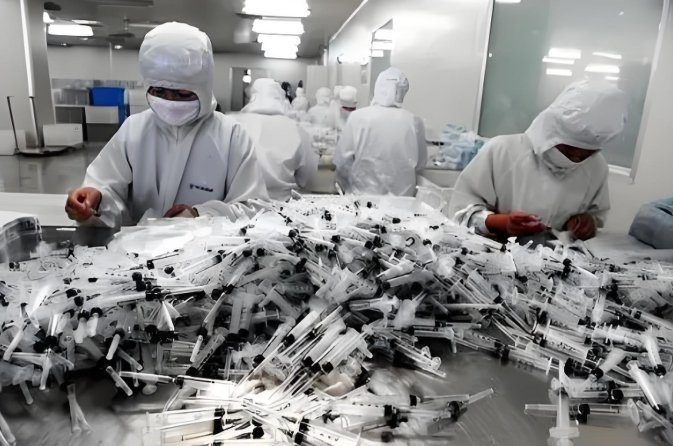
Automation is transforming medical injection molding. It improves efficiency, reduces costs, and enhances precision. Mold makers use robotics, AI, and IoT to optimize production. Automated systems ensure faster cycle times, lower waste, and consistent quality.
1. Why Automation is Essential in Medical Injection Molding
1.1 Improving Production Speed
- Automated machines work continuously.
- Reduces cycle time and increases output.
1.2 Ensuring Consistent Quality
- AI-driven systems detect defects instantly.
- Eliminates human error in molding processes.
1.3 Reducing Manufacturing Costs
- Automation lowers labor costs.
- Minimizes material waste and energy use.
1.4 Meeting Medical Industry Standards
- Automated monitoring ensures FDA and ISO compliance.
- Reduces risk of defective medical components.
2. Key Automation Technologies in Medical Injection Molding
2.1 Robotic Part Handling Systems
- Robots remove molded parts quickly.
- Prevents contamination and ensures sterility.
2.2 AI-Powered Quality Control
- Machine learning detects microscopic defects.
- Enhances accuracy in medical device production.
2.3 IoT-Connected Smart Machines
- Monitors temperature, pressure, and cycle times in real-time.
- Predicts issues before they cause defects.
2.4 Automated Material Feeding Systems
- Delivers precise amounts of plastic resin.
- Reduces material waste and improves consistency.
3. The Role of Mold Makers in Automation
3.1 Designing High-Precision Molds
- Mold makers create durable, automated-compatible molds.
- Ensures smooth injection and ejection processes.
3.2 Implementing Smart Mold Sensors
- Sensors track mold wear and performance.
- Prevents unplanned downtime and maintenance issues.
3.3 Using Hot Runner Systems for Efficiency
- Reduces plastic waste from sprues.
- Lowers material consumption and energy use.
3.4 Enhancing Mold Cooling Systems
- Conformal cooling improves heat dissipation.
- Shortens cycle times for faster production.
4. How Automation Improves Efficiency in Medical Injection Molding
4.1 Faster Cycle Times
- Automated presses optimize speed without quality loss.
- Smart cooling reduces waiting time between cycles.
4.2 Higher Yield and Less Waste
- AI monitors production to eliminate scrap.
- Reduces defective parts through real-time corrections.
4.3 Reduced Labor Costs
- Robotic arms replace repetitive manual tasks.
- Operators focus on quality control and machine maintenance.
4.4 Real-Time Production Monitoring
- IoT-connected machines send instant performance alerts.
- Prevents delays and costly machine failures.
5. Cost Savings with Automated Medical Injection Molding
5.1 Lower Material Waste
- Precision injection prevents excess plastic use.
- Recyclable medical plastics reduce costs.
5.2 Energy-Efficient Manufacturing
- Electric molding machines consume 30% less energy.
- AI adjusts machine power use based on demand.
5.3 Predictive Maintenance Reduces Downtime
- Smart sensors detect mold wear before failure.
- Prevents costly unplanned shutdowns.
5.4 Faster ROI on Equipment Investment
- Automation leads to higher production volume.
- Cost savings over time offset initial investment.
6. Quality Control Improvements with Automation
6.1 Vision Inspection Systems
- High-resolution cameras detect defects immediately.
- Reduces rejected medical parts.
6.2 Automated Dimensional Checks
- AI compares part measurements to specifications.
- Ensures uniform product consistency.
6.3 Cleanroom-Compatible Robotics
- Reduces human contact in sterile environments.
- Maintains ISO 14644 cleanroom standards.
6.4 AI-Driven Compliance Tracking
- Automatically logs production data for FDA audits.
- Ensures complete traceability of medical components.
7. Challenges of Implementing Automation
7.1 High Initial Investment
- Robotics and AI require upfront costs.
- Long-term savings outweigh setup expenses.
7.2 Workforce Training Needs
- Employees need training to operate automated systems.
- Smart machines require skilled technicians for maintenance.
7.3 Integrating Automation with Existing Systems
- Legacy equipment may need upgrades.
- IoT connectivity is required for smart monitoring.
7.4 Cybersecurity Risks
- IoT-connected machines need data protection.
- Secure cloud storage ensures sensitive production data safety.
8. Future Trends in Medical Injection Molding Automation
8.1 Fully Autonomous Manufacturing Plants
- AI and robotics will manage entire production lines.
- Human intervention will be minimal.
8.2 AI-Powered Smart Molding Optimization
- AI will self-adjust molding conditions for maximum efficiency.
- Smart molds will adapt in real time to prevent defects.
8.3 5G-Connected IoT Machines
- Faster data transmission will enable instant production adjustments.
- Improves efficiency and machine-to-machine communication.
8.4 Blockchain for Quality Control and Compliance
- Secure tracking of material sourcing and product defects.
- Ensures transparency and FDA compliance.
8.5 3D-Printed Smart Molds
- AI-generated 3D-printed mold inserts reduce costs.
- Allows for rapid prototyping and fast mold changes.
Automation is revolutionizing medical injection molding. Mold makers design high-precision molds to support AI-driven, robotic, and IoT-enabled manufacturing. Automation increases efficiency, reduces costs, and improves quality. As technology advances, fully autonomous production will define the future of medical molding.
